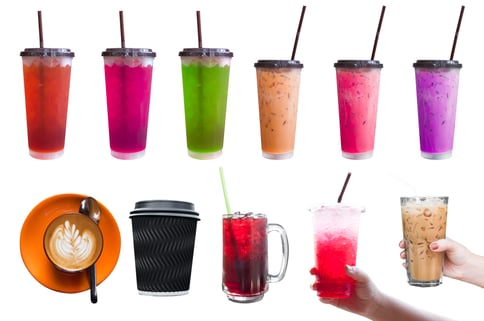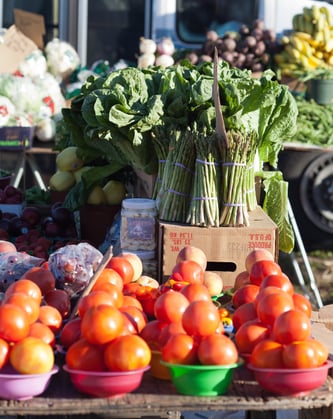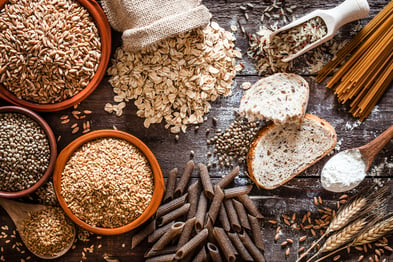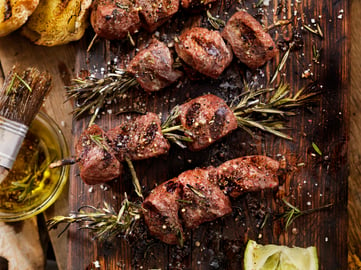You are constantly burning calories from food and drink and turning them into energy for the countless tasks your cells complete every minute. One of the most interesting features of metabolism is something many people outside the medical and fitness fields have never heard of: set point theory.
 Set point theory suggests that the human body maintains a predetermined range of body weight or fat mass through intricate physiological mechanisms. Rooted in the concept of homeostasis, it proposes that the body actively defends this “set point” much like a thermostat regulates temperature. First introduced in the 1950s and formalized through research in the 1980s and beyond, the theory helps explain why many individuals struggle to sustain weight loss long term. Evolutionarily, this defense system protected us from famine by conserving energy and promoting fat storage.
Set point theory suggests that the human body maintains a predetermined range of body weight or fat mass through intricate physiological mechanisms. Rooted in the concept of homeostasis, it proposes that the body actively defends this “set point” much like a thermostat regulates temperature. First introduced in the 1950s and formalized through research in the 1980s and beyond, the theory helps explain why many individuals struggle to sustain weight loss long term. Evolutionarily, this defense system protected us from famine by conserving energy and promoting fat storage.
This feedback loop is regulated by the brain, hormones, and metabolic processes. The hypothalamus integrates signals from hormones such as leptin (which promotes satiety) and ghrelin (which stimulates hunger) to adjust energy balance. When body weight falls below the defended set point, the body slows metabolism and increases ghrelin release, pushing weight upward. When weight exceeds the set point, mechanisms such as increased diet-induced thermogenesis and reduced hunger cues help bring it back down. Unfortunately, our modern food environment and sedentary lifestyles can disrupt this system and gradually elevate the set point over time.
Evidence supporting set point theory comes from multiple human and animal studies. After significant weight loss—whether from bariatric surgery, weight-loss competitions, or very low-calorie diets—most individuals regain much of the lost weight within 2–5 years. Persistent metabolic slowing works to defend the original set point. Studies involving identical twins also suggest genetics play a major role, as twins show similar set points despite different upbringings. Animal research further reinforces these patterns, with rodents returning rapidly to pre-intervention weights once normal feeding resumes.
Still, the theory has detractors. Emerging research indicates that sustained lifestyle changes—consistent resistance training, regular cardiovascular exercise, and balanced nutrition—may gradually lower the body’s preferred weight range. These habits can alter hormonal sensitivity, improve metabolic function, and even influence the gut microbiome in ways that support a lower set point.
The metabolic set point theory carries important implications for weight management. It strongly discourages crash diets or rapid weight-loss fads and instead supports sustainable, gradual approaches that work with your body, not against it. Strength training, meeting cardiovascular or step goals, and maintaining a nutrient-dense diet remain the gold standards.
Recent medications such as GLP-1 agonists also show promise for shifting the set point downward, though more long-term research is needed to determine how durable these effects are. Current evidence suggests that when these drugs are discontinued, individuals regain about 60% of the lost weight within a year.
And perhaps most importantly—especially during the holiday season—this research reminds us that consistency leaves room for occasional indulgence. So go ahead and enjoy that extra serving of your favorite holiday dish, and yes… maybe even a second slice of pumpkin pie. Just remember to get back to your routine when you’re back in the fitness center!

 Aging gracefully starts with the right nutrients! Good health doesn’t happen by chance—it requires proactive choices. Nutrition is important for every generation, but it becomes even more critical as we age. As we grow older, our nutritional needs change, and understanding what’s essential can make all the difference in staying active, healthy, and full of energy. In this blog, we will discuss why your nutritional needs change with age, key nutrients to focus on, and easy ways to incorporate them into your life.
Aging gracefully starts with the right nutrients! Good health doesn’t happen by chance—it requires proactive choices. Nutrition is important for every generation, but it becomes even more critical as we age. As we grow older, our nutritional needs change, and understanding what’s essential can make all the difference in staying active, healthy, and full of energy. In this blog, we will discuss why your nutritional needs change with age, key nutrients to focus on, and easy ways to incorporate them into your life.
 The neuromotor connection refers to the intricate interplay between the nervous system and motor functions, encompassing a complex network of signals that regulate movement, coordination, and balance. In older adults, this connection undergoes natural changes, influenced by factors such as age-related neuronal alterations, decreased muscle mass, and changes in proprioception. The neuromotor systems can effect the human body in many different subsets of health.
The neuromotor connection refers to the intricate interplay between the nervous system and motor functions, encompassing a complex network of signals that regulate movement, coordination, and balance. In older adults, this connection undergoes natural changes, influenced by factors such as age-related neuronal alterations, decreased muscle mass, and changes in proprioception. The neuromotor systems can effect the human body in many different subsets of health.
 After the excitement of holiday parties and festivities slows down, we sometimes find ourselves in a funk. Life can seem a bit slow, minimal sunlight and weather keeps us cooped up inside, and we feel a bit sluggish. Get rid of winter blues with these tips to warm the soul.
After the excitement of holiday parties and festivities slows down, we sometimes find ourselves in a funk. Life can seem a bit slow, minimal sunlight and weather keeps us cooped up inside, and we feel a bit sluggish. Get rid of winter blues with these tips to warm the soul.
 Let’s get started with EVERYONES favorite go to drink, or should be, WATER! Magical water contains zero calories, zero sugars, and zero caffeine. By drinking water throughout the day your brain, kidneys, skin, joints, digestive system, body temperature, and blood pressure will all thank you! Water will help regulate the body to run properly and make you feel great.
Let’s get started with EVERYONES favorite go to drink, or should be, WATER! Magical water contains zero calories, zero sugars, and zero caffeine. By drinking water throughout the day your brain, kidneys, skin, joints, digestive system, body temperature, and blood pressure will all thank you! Water will help regulate the body to run properly and make you feel great. ere are my top 5 reasons why visiting your local farmer’s market is a must.
ere are my top 5 reasons why visiting your local farmer’s market is a must.
.jpg?width=385&name=GettyImages-482817556%20(1).jpg) The more we age, the less we move, and the more we start to take our health for granted, especially if we have been “healthy” for most of our lives. We often hear about the need to exercise more as we get older, but what about the nutrition aspect? Eating healthy foods is just as important as exercising. There are some good practices and tricks to maintaining a healthy diet and exercising plan as we age.
The more we age, the less we move, and the more we start to take our health for granted, especially if we have been “healthy” for most of our lives. We often hear about the need to exercise more as we get older, but what about the nutrition aspect? Eating healthy foods is just as important as exercising. There are some good practices and tricks to maintaining a healthy diet and exercising plan as we age.
 Whole grains have been advertised as being part of balanced diet for as long as I can
Whole grains have been advertised as being part of balanced diet for as long as I can  I was looking for fitness challenge. I had already been running 5k races and had either won or placed in every race (6) within my age group, so I felt like I was ready for more. My mother suggested I race a half-marathon. Truly, running 13.1 miles sounded awful and I had no desire to run that far for pure enjoyment. Suddenly, I found myself logging longer runs on the weekends just to test my endurance. When early registration came for the
I was looking for fitness challenge. I had already been running 5k races and had either won or placed in every race (6) within my age group, so I felt like I was ready for more. My mother suggested I race a half-marathon. Truly, running 13.1 miles sounded awful and I had no desire to run that far for pure enjoyment. Suddenly, I found myself logging longer runs on the weekends just to test my endurance. When early registration came for the 